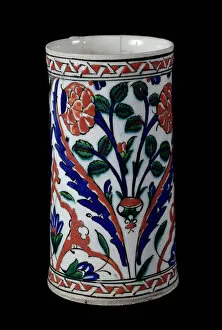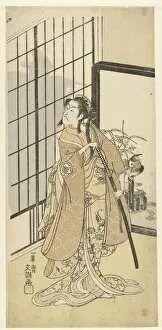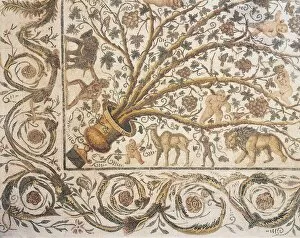Flower Pattern Collection
"Flower Pattern: A Timeless Beauty Across Cultures and Centuries" From ancient civilizations to modern-day art
For sale as Licensed Images
Choose your image, Select your licence and Download the media
"Flower Pattern: A Timeless Beauty Across Cultures and Centuries" From ancient civilizations to modern-day art, the allure of floral patterns has captivated humanity for centuries. This captivating vase from Mycenae, dating back to 1500-1400 BC, showcases intricate ceramic work adorned with a delicate floral decoration. The craftsmanship is equally mesmerizing in an Iznik pot, where vibrant flowers bloom on its ceramic surface. Even in ancient times, the Amarna Period's roundel demonstrates how flowers were revered as symbols of beauty and life. Created using faience during the reign of Ramesses III in the New Kingdom era (1184-53 BC), this exquisite piece showcases a stunning floral design that transcends time. The elegance continues with an Iznik dish featuring a breathtaking floral motif crafted from ceramics. Its intricate details bring forth a sense of harmony and grace. Beyond pottery, flower patterns have also found their way into other art forms. In Japanese theater, actor Matsumoto Koshiro III beautifully embodies femininity through his portrayal of Asagao—a female role intertwined with delicate blossoms that symbolize fragility and strength simultaneously. Moving beyond performance arts, even jewelry embraces flower patterns' enchantment. An intricately engraved blackwork pendant depicting Cupid transports us to 1609 when love was celebrated through artistic expressions. In literature too, illuminated manuscripts like "Le Moyen Age et La Renaissance" by Paul Lacroix showcase decorated letters embellished with blooming florals—each stroke celebrating nature's beauty while adding visual richness to written words. Finally, we journey to Carthage where a mosaic reveals how flowers transcend cultural boundaries. Amidst ruins lies evidence that even ancient civilizations recognized the universal appeal of these natural wonders—depicting them in colorful mosaics as timeless tributes to life's ephemeral yet enduring essence. Across continents and throughout history, flower patterns have woven their way into the fabric of human expression.
















